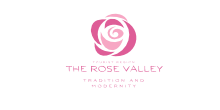The vital waters of Tundzha, the fertile soils, the wonderful climate and the large number of sunny days during the year are the prerequisites for the first inhabitants to settle here during the Neolithic /about 7000 BC/. That is why we would be right to claim that Kazanlak is one of the most ancient cities not only in Bulgaria, but also in Europe!
In ancient times, a rich Thracian culture existed on the territory of the beautiful Rose Valley. The discovered archaeological sites are of great interest both to scientists and tourists. Not far from Kazanlak, under the waters of the Koprinka Dam, is the only Thracian town that has been fully explored so far – Seuthopolis, founded by the Thracian king Seuthes III. In the Kazanlak valley, there are many Thracian tombs – masterpieces of monumental and fine art from the antiquity. Later, the Ottoman Turks also left their cultural imprint.
The name of the town dates back to its Ottoman establishment and is derived from the Turkish Akce Kuzanlar (white girls), when Sultan Murad I saw the beautiful maidens who greeted him.
Since ancient times, the town became famous for the production of rose oil and its highly developed crafts. Hardworking, beautiful and talented throughout the centuries, that is how the people from the Kazanlak region have always been. Gardens and fields surrounded the neat white houses like a green wreath. And when, in the 17th century, travellers brought the Damask rose from Asia, it found its second home here and became the greatest wealth of the valley, which took its name – the Rose Valley. Rose oil began to be exported from Kazanlak all over the world, and the Bulgarian lands were called the Kingdom of Roses.
The blessed valley is a crossroads and Thracians, Celts, Romans, knights, Bulgarians have passed through it, ... More or less everyone has left a part of themselves. Seuthes III, the proud Eltimir and many more used to live in the region...
Far back in 1873, a group of residents from Kazanlak organized in a classroom at the Novena school the studious group "Iskra," which gradually became the founder of the Iskra theatre/community centre, the Iskra library, and the Iskra museum-gallery.
The oldest industrial enterprise in the town is the Passementerie factory of the Staynov brothers, which grew into a large textile factory for woollen yarns and fabrics "Rosova Dolina (en: Rose Valley)." In the twenties of the 20th century, the native of Kazanlak, Gen. Ivan Valkov, relocated the Sofia Arsenal factory to his hometown. Just two years later, the Kaproni engineering enterprise for airplanes, tractors and dental chairs was established, and in 1930, JSC Bulgaria was founded for the production of cotton yarn. Kremona was the country's first and only enterprise for stringed musical instruments, founded in 1924. The inhabitants gradually became wealthy and the town took on a European appearance. Over the years, the number of industrial enterprises in the town multiplied: textiles, machine building, perfume industry, food industry. During the so-called "years of socialism," the town became the heart of Bulgarian hydraulics as its fame has not faded to this day.
Kazanlak is known as a town of actors: Lyubomir Kabakchiev, Stefan Getsov, Luna Davidova, Vidin Daskalov; town of artists: Academician Dechko Uzunov, Prof. Nenko Balkanski, Ivan Milev, ...; town of musicians and composers: Emanuil Manolov, Ivan Shirov.
The cultural life in Kazanlak is colourful and attractive. There are hundreds of cultural events throughout the year. Their peak is the annual Rose Festival, attracting tens of thousands of visitors from every corner of the world. And everyone who took a sip of water from the Tsar's fountain, one of the symbols of Kazanlak, stays in it forever!
